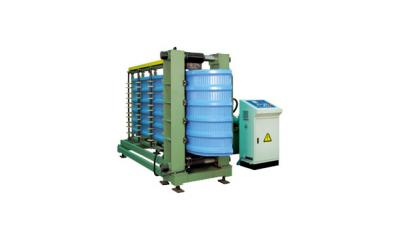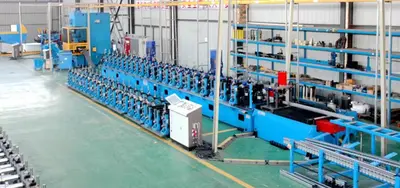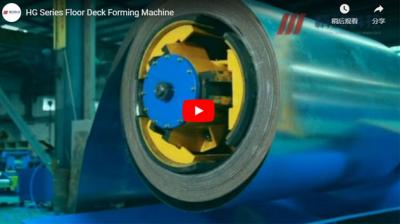What is pu sandwich panel?
A PU sandwich panel, also known as a polyurethane sandwich panel, is a type of building material commonly used for insulation and construction purposes. It consists of three layers: two outer layers made of metal (usually steel or aluminum) and a core layer made of polyurethane foam.
The polyurethane foam core provides excellent thermal insulation properties, making PU sandwich panels an efficient choice for maintaining temperature control in buildings. The foam core also contributes to sound insulation, preventing noise transmission between different areas.
Characteristics of polyurethane sandwich panels
Polyurethane (PU) sandwich panels have several key characteristics that make them popular in construction and insulation applications. Here are some of the main characteristics of polyurethane sandwich panels:
Excellent Thermal Insulation: PU sandwich panels have a high thermal resistance, which helps to reduce heat transfer between the inside and outside of a building. This insulation capability helps maintain a comfortable interior temperature and reduces energy consumption for heating and cooling.
Lightweight and High Strength: Despite their lightweight nature, PU sandwich panels offer high structural strength and load-bearing capacity. This characteristic makes them suitable for various building applications while minimizing the overall weight of the structure.
Sound Insulation: The polyurethane foam core in sandwich panels acts as an effective sound barrier, reducing noise transmission between different areas. This is particularly useful in buildings where soundproofing is required, such as recording studios or facilities located near busy roads or airports.
Fire Resistance: PU sandwich panels can be manufactured with fire-resistant properties, which helps to delay the spread of flames and maintain the structural integrity of the building in case of a fire. These panels typically have a non-combustible metal facing and a foam core with fire-retardant additives.
Moisture and Weather Resistance: PU sandwich panels are designed to be resistant to moisture, humidity, and weather conditions. The metal facings provide a protective barrier against water infiltration, preventing corrosion and maintaining the integrity of the panel over time.
Design Flexibility: PU sandwich panels offer design versatility, as they are available in various thicknesses, lengths, and surface finishes. This allows for customization to meet specific project requirements and aesthetic preferences.
Longevity and Durability: PU sandwich panels are known for their durability and longevity. The combination of the metal facings and the foam core provides protection against wear, corrosion, and physical damage, ensuring a long lifespan for the panels.
What are sandwich panels used for and what types are there?
Sandwich panels are used in a variety of applications where insulation, structural strength, and ease of installation are important. Some common uses of sandwich panels include:
Building Construction: Sandwich panels are widely used in building construction for walls, roofs, and floors. They provide thermal insulation, structural support, and weather protection.
Industrial and Commercial Buildings: Sandwich panels are used in industrial and commercial structures such as warehouses, factories, cold storage facilities, and cleanrooms. They offer temperature control, sound insulation, and fire resistance.
Residential Construction: Sandwich panels can be used in residential buildings for walls, roofs, and partitions. They provide energy efficiency, noise reduction, and quick installation.
Transportation: Sandwich panels are used in the construction of vehicles, including trucks, trailers, and refrigerated vans. They offer lightweight construction, thermal insulation, and durability.
Modular Buildings: Sandwich panels are commonly used in the construction of modular buildings, such as prefabricated houses, offices, and classrooms. They provide quick and efficient assembly, insulation, and structural stability.
Cold Storage and Controlled Environment Facilities: Sandwich panels are ideal for cold storage warehouses, food processing facilities, and controlled environment rooms. They offer excellent insulation properties, maintaining specific temperature and humidity levels.
Sports Facilities: Sandwich panels are used in the construction of sports facilities such as indoor arenas and ice rinks. They provide insulation, sound absorption, and fire resistance.
Types of sandwich panels:
Polyurethane (PU) Sandwich Panels: PU sandwich panels consist of two metal facings with a polyurethane foam core. They offer excellent thermal insulation, high strength, and fire resistance. (You may want to get information on pu sandwich panel line)
Polystyrene (EPS) Sandwich Panels: EPS sandwich panels have expanded polystyrene foam as the core material. They provide good thermal insulation but may have lower strength compared to PU panels.
Mineral Wool Sandwich Panels: Mineral wool sandwich panels have a mineral wool core, which offers excellent fire resistance and acoustic insulation properties. They are often used in buildings with strict fire safety regulations.
Polyisocyanurate (PIR) Sandwich Panels: PIR sandwich panels have a polyisocyanurate foam core, which provides high thermal insulation and fire resistance. They are commonly used in buildings requiring enhanced fire performance.
Phenolic Foam Sandwich Panels: Phenolic foam sandwich panels have a phenolic foam core that offers exceptional fire resistance, low smoke emission, and thermal insulation properties. They are suitable for applications with stringent fire safety requirements.
What is the fire rating of polyurethane sandwich panel?
Polyurethane (PU) sandwich panels typically have a fire rating that indicates their level of fire resistance. The fire rating of PU sandwich panels can vary depending on the specific formulation and construction of the panels. However, in general, PU sandwich panels have good fire-resistant properties.
PU sandwich panels produced by sandwich panel production line with a standard fire rating typically have a Class B or Class C fire rating, according to international fire safety standards. These ratings indicate their performance in terms of flame spread, smoke generation, and heat release during a fire.
It's important to note that the fire rating of PU sandwich panels can be further enhanced by incorporating fire-retardant additives into the polyurethane foam core or by using fire-resistant facing materials. This can result in panels with higher fire ratings, such as Class A or Class B-s1, d0, which offer even greater fire resistance and reduced smoke and toxic gas emissions.
To ensure compliance with local fire safety regulations and standards, it is recommended to consult with manufacturers or suppliers of PU sandwich panels to determine the specific fire rating and performance characteristics of their products. Additionally, local building codes and regulations may prescribe certain fire safety measures and requirements for the use of sandwich panels in specific applications.
You may also be interested in these products:
sandwich panel machine
uncoiler machine
h beam welding machine
pu sandwich panel machine


 CN
CN
 EN
EN
 fr
fr  de
de  es
es  it
it  ru
ru  pt
pt  ar
ar  th
th  pl
pl  ro
ro 







 Call us on:
Call us on:  Email Us:
Email Us:  #1809, Jianhu Rd, Keqiao, Shaoxing, Zhejiang, China
#1809, Jianhu Rd, Keqiao, Shaoxing, Zhejiang, China 